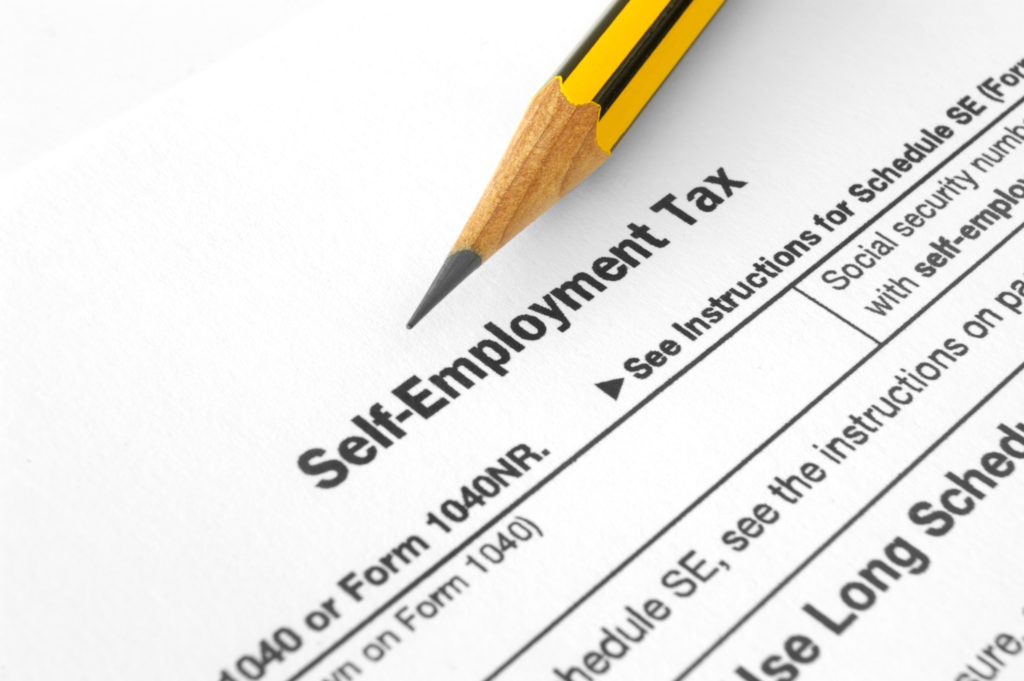Tax-Saving Tips
July 2022
Self-Employment Tax Basics
If you own an unincorporated business, you likely pay at least three different federal taxes. In addition to federal income taxes, you must pay Social Security and Medicare taxes, also called the self-employment tax.
Self-employment taxes are not insubstantial. Indeed, many business owners pay more in self-employment taxes than in income tax. The self-employment tax consists of
- a 12.4 percent Social Security tax up to an annual income ceiling ($147,000 for 2022) and
- a 2.9 percent Medicare tax on all self-employment income.
These amount to a 15.3 percent tax, up to the $147,000 Social Security tax ceiling. If your self-employment income is more than $200,000 if you’re single or $250,000 if you’re married filing jointly, you must pay a 0.9 percent additional Medicare tax on self-employment income over the applicable threshold for a total 3.8 percent Medicare tax.
You pay the self-employment tax if you earn income from a business you own as a sole proprietor or single-member LLC, or co-own as a general partner in a partnership, an LLC member, or a partner in any other business entity taxed as a partnership. (There is an exemption for limited partners.)
You don’t pay self-employment tax on personal investment income or hobby income. For example, you don’t pay self-employment tax on profits you earn from selling stock, your home, or an occasional item on eBay.
The tax code bases your self-employment tax on 92.35 percent of your net business income.
That means your business deductions are doubly valuable since they reduce both income and self-employment taxes. In contrast, personal itemized deductions and “above-the-line” adjustments to income don’t decrease your self-employment tax.
Some types of income are not subject to self-employment tax at all, including
- most rental income,
- most dividend and interest income,
- gain or loss from sales and dispositions of business property, and
- S corporation distributions to shareholders.
You calculate your self-employment taxes on IRS Form SE and pay them with your income taxes, including your quarterly estimated taxes.
Self-Employment Taxes for Partners and LLC Members
Here’s a question: Does a member of a limited liability company (LLC) or a partner in a partnership have to pay self-employment taxes on the member’s or partner’s share of the entity’s income?
Incredibly, the answer is not always clear.
If you are a general partner in a general partnership, you must pay self-employment tax on your entire distributive share of the ordinary income earned from the partnership’s business. General partners also must pay self-employment tax on any guaranteed payments for services rendered to the partnership.
Partnerships generally are not required to pay guaranteed payments to the partners. Guaranteed payments are like employee salaries; the partnership pays them without considering the partnership’s income. They are often incorrectly called “partner salaries.”
If you’re a limited partner in a limited partnership, you don’t pay self-employment tax on your share of the partnership’s profits. But you do pay self-employment tax on any guaranteed payments you receive.
That’s all well and good. But what about LLCs? They are the most popular business entity in the U.S. today, with an estimated count of 21 million. It is not always clear when LLC members (owners) pay self-employment tax.
LLCs are state law entities not recognized for federal tax purposes. In other words, they are always taxed as something else. The tax code taxes the single-member LLCs as a sole proprietorship unless the owner elects taxation as a corporation (which is rare). Thus, owners of single-member LLCs file Schedule C and pay self-employment tax on their net profit. It couldn’t be simpler.
LLCs with multiple members are treated as partnerships for tax purposes unless they elect taxation as a corporation. If a multi-member LLC is taxed as a partnership, should its members be treated as general or limited partners?
Under proposed IRS regulations:
- Members of member-managed LLCs cannot be treated as limited partners and must pay self-employment tax.
- Members of manager-managed LLCs can qualify as limited partners, provided they work no more than 500 hours per year in the LLC business.
- Members of service LLCs engaged in health, law, engineering, architecture, accounting, actuarial science, or consulting must be classified as general partners.
Fortunately, you don’t have to follow the proposed regulations. The IRS has not finalized them and says it won’t enforce them.
You can look at U.S. Tax Court rulings instead. The leading case says an LLC owner may be treated as a limited partner only if he is a passive investor who does not actively participate in the LLC business.
New 62.5 Cents Mileage Rate
The IRS noticed that average gas prices across the United States exceeded $5.00 a gallon and took action.
Small businesses that qualify to use and do use the standard mileage rate can deduct 62.5 cents per business mile from July 1 through December 31, 2022. That’s up 4 cents a mile.
This brings up a practical question: what do you do if you track business mileage using the three-month sample method?
Three-Month Sample Basics
As a reminder, here are the basics of how the IRS describes the three-month test:
- The taxpayer uses her vehicle for business use.
- She and other members of her family use the vehicle for personal use.
- The taxpayer keeps a mileage log for the first three months of the taxable year, showing that she uses the vehicle 75 percent of the time for business.
- Invoices and paid bills show that her vehicle use is about the same throughout the year.
According to this IRS regulation, her three-month sample is adequate for this taxpayer to prove her 75 percent business use.
Sample-Method Solution to New July 1 Mileage Rate
To use the sample rate, you need to prove that your vehicle use is about the same throughout the year. Your invoices and paid bills prove the mileage part, and your appointment book can add creditability to consistent business and personal use.
Keep in mind that the sample is just that—a sample—it’s pretty exact for the three months but not that exact for the year, although it must adequately reflect the business mileage for the year.
If you have a good three-month sample, you take your business mileage for the year and apply the 58.5 cents to half the mileage and the 62.5 cents to the remaining half to find your deductions.
For example, say you drove 20,000 business miles for the year. Your deduction would be $12,100 (10,000 x 58.5 cents + 10,000 x 62.5 cents).
Mileage Record for the Full Year
If you have a mileage record for the entire year, no problem. Your record gives you the mileage for the first six months and the last six months.
Paying Your Child: W-2 or 1099?
Here’s a question I received from one of my clients: “I will hire my 15-year-old daughter to work in my single-member LLC business, and I expect to pay her about $12,000 this year. Do I pay her through payroll checks and file a W-2?”
My Answer
Yes. And W-2 payment is essential. If you pay her on a 1099, she will pay self-employment taxes.
When you pay her on a W-2, neither you nor your daughter pays any Social Security or Medicare taxes, and in most states, you also don’t pay any unemployment taxes.
Key point 1. Your single-member LLC is a “disregarded entity” for federal tax purposes. It’s taxed as a sole proprietorship (unless you elect corporate treatment). In this instance, you are the child’s parent, enabling “no Social Security or Medicare taxes” for both your child and your proprietorship.
Key point 2. Your daughter has a $12,950 standard deduction. This means she also pays zero tax on earned income up to that amount.



